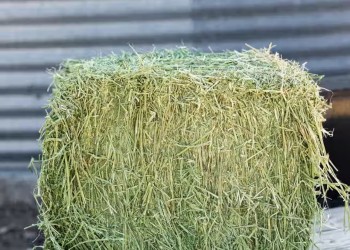Exotic and Invasive Species
The Forest Service is a recognized leader in invasive species ecology, management, and research in the United States and internationally. We work with public and private organizations, tribes, states, and local landowners to address a wide range of aquatic and terrestrial invasive species. As a major federal landowner, the agency prevents and controls invasive species across the 193 million-acre National Forest System, public lands and waters extending from Alaska to the Caribbean. The Forest Service works with partners at all levels to respond to and manage invasive species, as well as other native pests and diseases, that threaten the lands and waters of the United States.
What is an Invasive Species?
Invasive species have two main characteristics: they are non-native to the ecosystem that they occupy, and their existence in that ecosystem causes or is likely to cause harm to the economy, environment, or human health. If left unchecked, invasive species can threaten native species, biodiversity, ecosystem services, recreation, water resources, agricultural and forest production, cultural resources, economies and property values, public safety, and infrastructure.
Weed Free Hay Order

All Forests within the Intermountain Region (which includes the Fishlake National Forest) require that all hay brought onto the Forest be certified weed free hay. This requirement is necessary to prevent the spread of noxious weeds into a vulnerable ecosystem on National Forest System lands.
Aquatic Invasive Species

The Forest Service manages invasive species in bodies of water on forest lands to protect native ecosystems. Anyone who launches a boat or any other watercraft in Utah — resident or nonresident — is required to take an annual mussel-aware boater course. This includes individuals with paddle boards, kayaks, float/fishing tubes and other nonmotorized watercraft.
Noxious Weeds
Invasive plant species, also called noxious weeds, are considered to be one of the four greatest threats to our national forests. The problem extends well beyond forest boundaries and is recognized by states and counties across the nation. Invasive and exotic plants are degrading National Forest systems lands at a rapid and ever-increasing rate. Without noxious weed management efforts, these aggressive plants will continue invading rangelands and timberlands that are so highly valued.
Cooperative weed management areas (CWMAs) include all of the area administered by the Forest. These CWMAs’ goal is to treat and prevent the spread of noxious weeds and include more that 30 federal, state, county, tribal and other partners. The Fishlake is a key member of three: Beaver County CWMA, Millard County CWMA, and the South-Central Utah CWMA (Piute, Sevier, Wayne, and the east half of Garfield counties).
Nearly 1.6% (about 27,500 acres) of the area administered by the Fishlake National Forest is infested with noxious or other key invasive weed species. The majority of the infestations occur in large contiguous areas that are easily accessible via the road network. Musk thistle occupies the largest area on the Forest and is found primarily on the Richfield Ranger District. Scotch thistle occupies the second largest acreage on the Forest, mostly on the Fillmore Ranger District, with notable amounts on Beaver Ranger District. Also, whitetop is prevalent on the Fillmore and Beaver Ranger Districts. Areas infested with these three species are the focus of the majority of treatments to date. With each successive treatment, the densities of weeds within these areas continues to decline. However, constant vigilance is required because their seeds may remain dormant and viable in the soil for more than 30 years.
Most weed treatments are accomplished via herbicide spraying. However, in 2008 and 2009 forest specialists increased emphasis on the use of biological controls. District efforts now include the release of beetles to combat leafy spurge and mites to attack field bindweed. The Beaver and Fremont River Ranger Districts have substantially few acres infested. Their weed programs focus on education and early detection and rapid response, though these approaches are important elements of the program strategies for all of the districts and the CWMA’s on the Fishlake. As part of the education effort, “Wash before you Ride” training demonstrations are often part of the kickoff presentation for ATV jamborees held on the Fishlake.
Noxious Weed and Invasive Plant Strategies and Regulations
National Strategy and Implementation Plan for Invasive Species Management - Invasive species have been identified as a significant threat to our forest and rangeland ecosystems. A national strategy has been developed to guide the Forest Service as it takes on this threat.
- Federal Noxious Weed Act - P.L. 93-629, Sec 2, Jan 3, 1975, 88 Stat.2148, and as amended P.L. 101-624, Title XIV, Sec 1453, Nov, 8, 1990, 104 Stat. 3611.
- Forest Service National Noxious Weed Policy (FS Manual 2900 replaces FSM 2080)
- Invasive Species Executive Order, Feb. 3, 1999 - An Executive Order to prevent the introduction of invasive species and provide for their control and to minimize the economic, ecological, and human health impacts that invasive species cause.
Invasive and Exotic Plants
If we act quickly, locally and regionally, cooperative noxious weed management will be economical and effective. The goal of the Intermountain Region's management of noxious weeds is to ensure we focus on working collaboratively with ourselves, our neighbors, and with each State within and bordering the Region. Our primary objective is to keep the 99 percent of the Intermountain Region's healthy non-infested acres noxious weed free. Renewed interest in weed management by all ownerships is indicated by aggressive approaches in weed management by the Western Governors and their State agencies, increased noxious weed budgets from Congress, national weed management strategies from the Department of Agriculture and Interior and the Forest Service. The intent of our management is to give the Region the flexibility to fulfill its obligations in noxious weed management and work as a partner with all other ownerships.
- Cooperative Weed Management
- Noxious Weed Links
- Invasive and Exotic Species (USDA Research and Development)


